Alpinestars Tech-Air air-bag safety system launched in Australia
Alpinestars revealed what could be a game changer in motorcycle safety this week with the Australian launch of the revolutionary Tech-Air product.
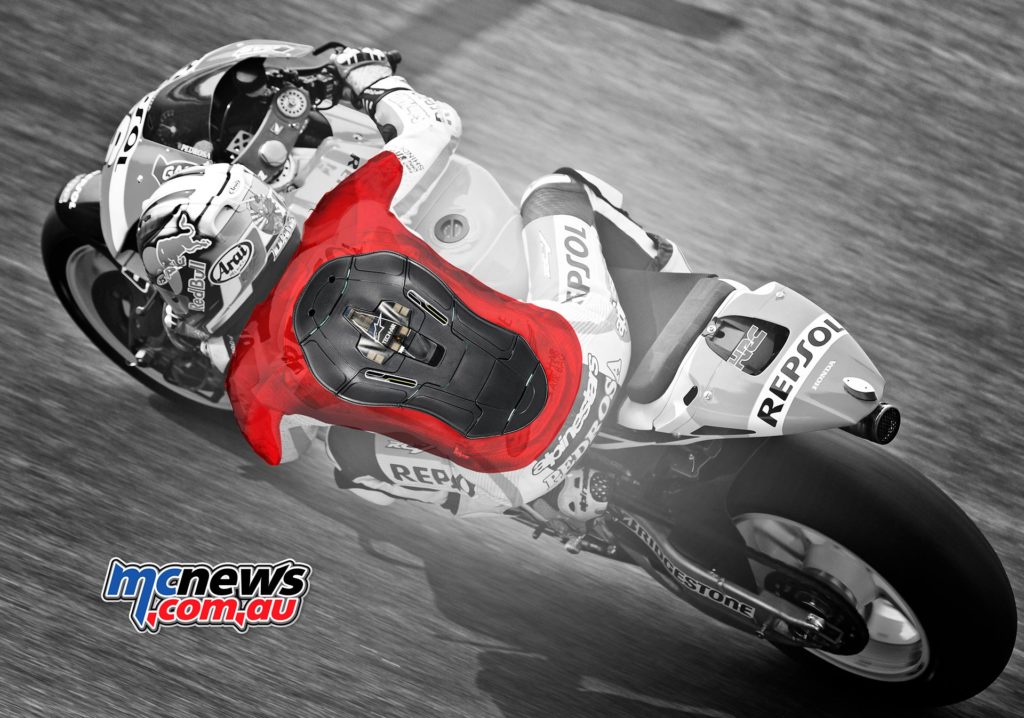
Alpinestars Tech-Air requires no external sensors, and is totally integrated into a self-contained safety vest. The vest itself also does not solely rely only on the inflatable side of the safety protection, as the Tech-Air vest includes a CE Certified back-protector which houses the electronic micro-processor and the inflator system.
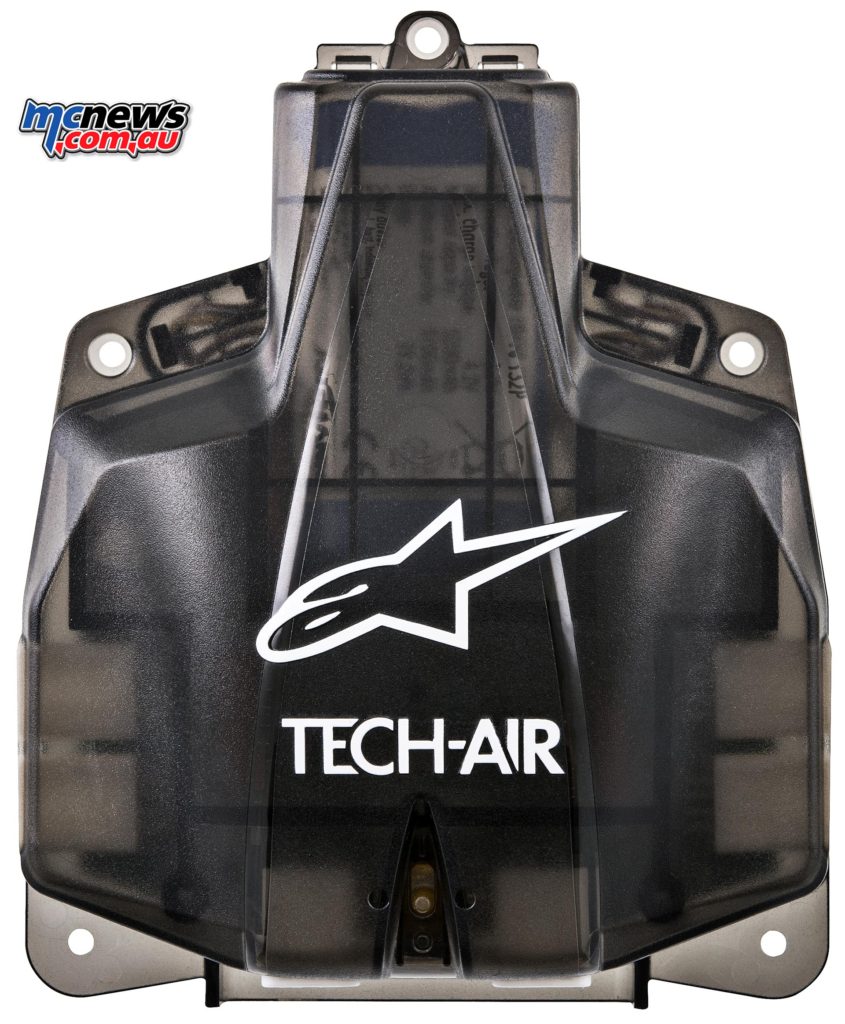
Alpinestars jackets are also designed with chest protection pockets, which house hard protectors and Alpinestars recommend the use of these chest protectors, along with all other passive protectors, to complement the protection given by Tech-Air. The Tech-Air vest is then plugged into the compatible jackets and the system is armed, so to speak, when the zipper on the jacket is fully closed.
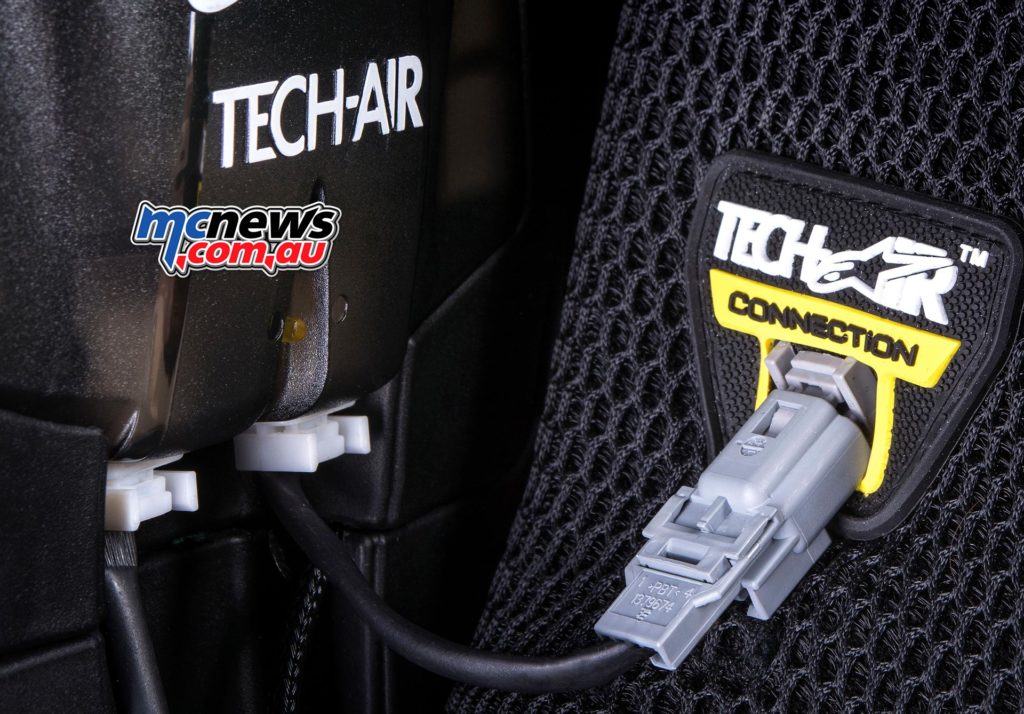
Chest protection is also provided by the air-bag, which also inflates to protect vital organs lower down in the torso. Anybody that has had the misfortune to read reports from fatal accidents knows only too well that, ‘massive chest injuries’, is the all too common cause of rider deaths. Thus chest protection is as vital, if not more so, than back protection.
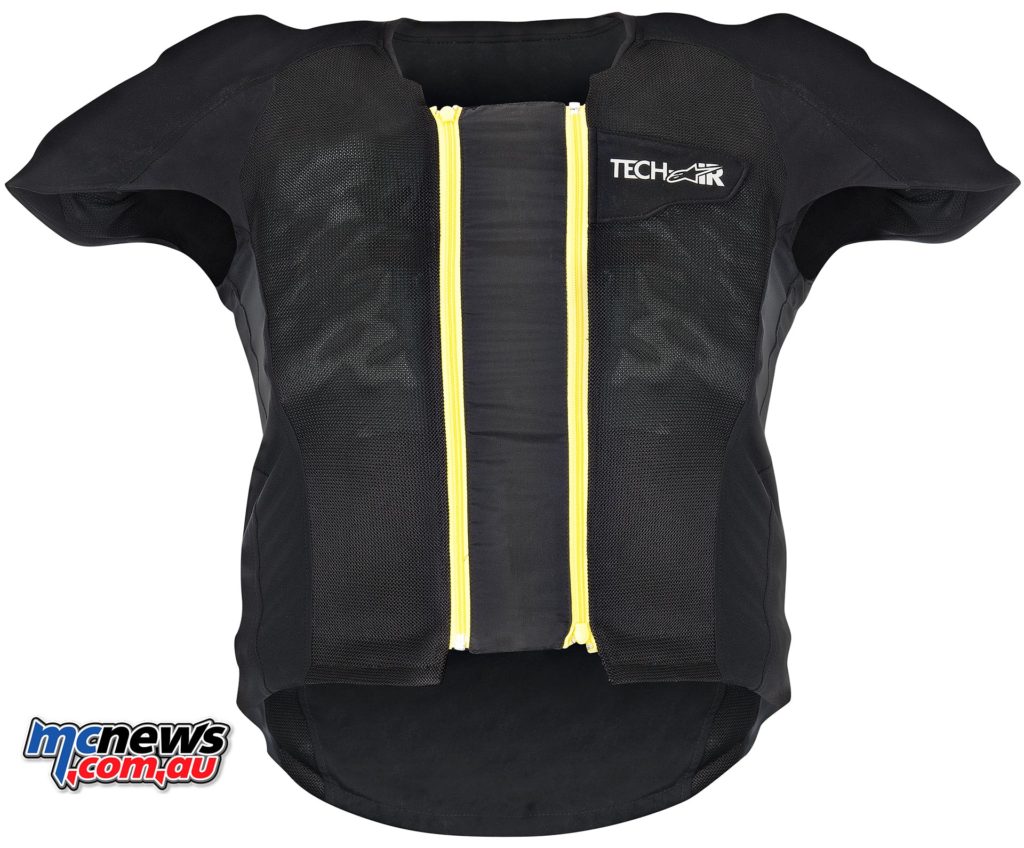
The system detects something untoward has happened via its three accelerometers, which are assisted by further continuous data channels provided by the integrated gyroscope, thus triggering the deployment of the air-bag well before the rider actually strikes any object.
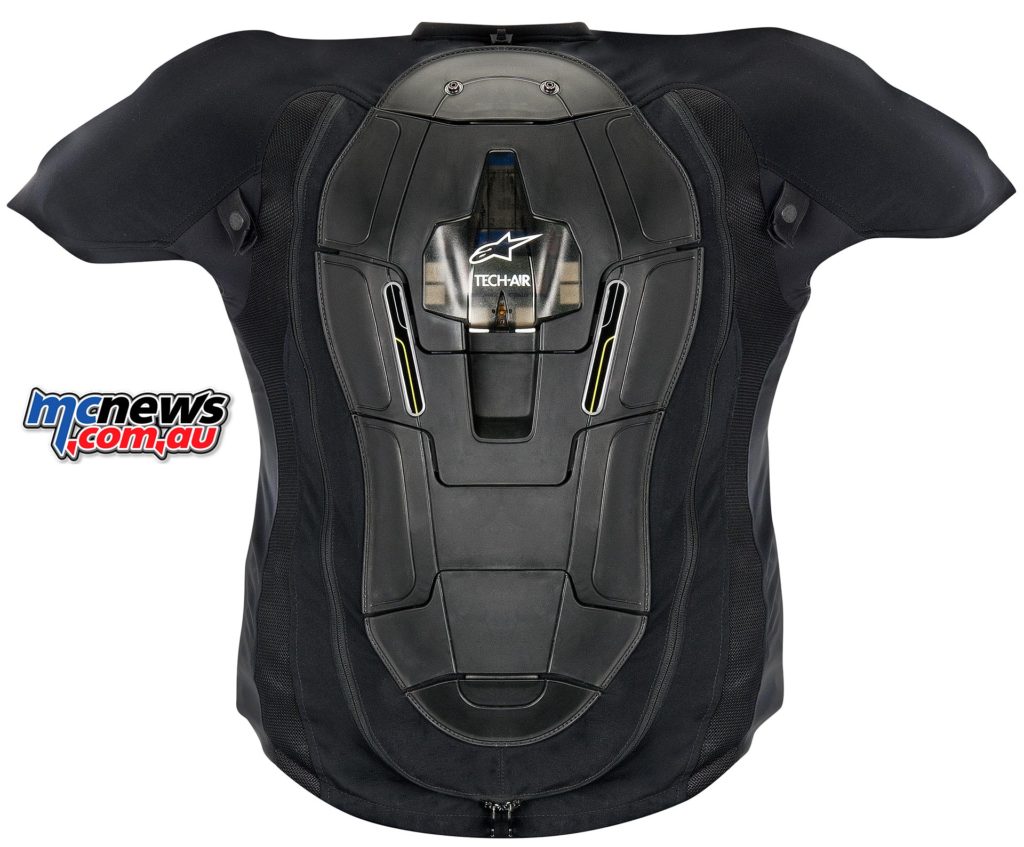
The Alpinestars Tech-Air vest is worn underneath other various Alpinestars jackets, five of which are already launched into market while more are coming later in the year, including a specialist adventure jacket.

It is the all-rounder merits of the adventure jacket that has me really excited. While the Tech-Air system can be used across all the new Alpinestars range of jackets, in reality most people are only going to be able to afford one, or perhaps two jackets, with which they can then combine with the additional safety protection afforded by the Tech-Air product.
Thus the coming adventure jacket, combined with the Tech-Air vest, can perhaps be somewhat of a do everything solution for many street riders. I would certainly also wear such a product when enduro riding, in everything but the height of summer at least. Images of the adventure jacket are not yet available and the adventure product is not expected to ship until later in the year.
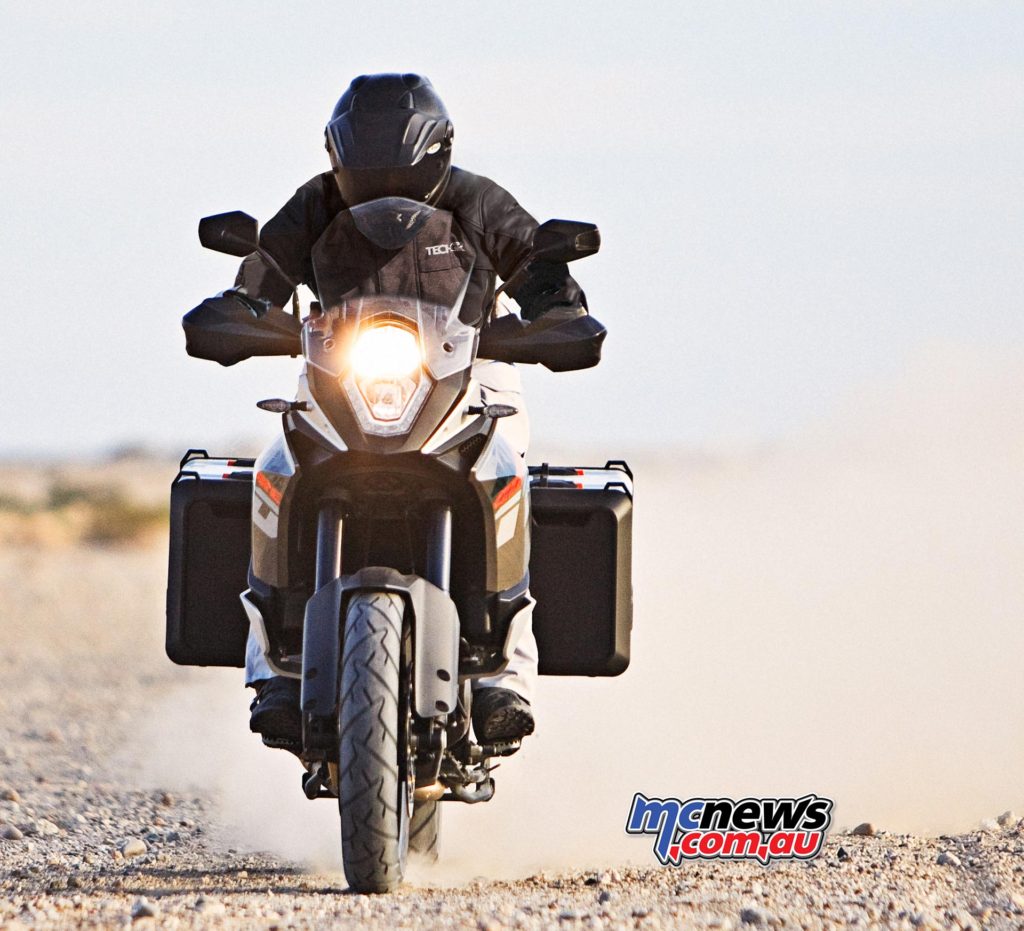
The major barrier for many motorcyclists will be cost. At $1599 for the Tech-Air, then at least another $700 for a compatible jacket. Thus Tech-Air is not a safety solution easily affordable for many motorcyclists, particularly the vulnerable young learner.
The Tech-Air vest comes in two different sizes with corresponding capacity differences to cater for the size and weight of the rider.

The Tech-Air vest can’t be worn under regular jackets, as those garments might not give up the space for the Tech-Air to successfully inflate without harming the user. Tech-Air also can’t be armed without the signal from the system that it has detected the zip of the jacket being fully closed, and the user can’t check the status of the system via the LED lighting system.

Let alone the additional cost of the compatible full leathers for those that also like to participate track days, while also investing in road riding gear that is compatible with the Tech-Air. However, Alpinestars could have chosen to fully integrate the Tech-Air product into each jacket, as a sealed unit, thus requiring the user to purchase numerous systems, increasing costs yet further.
The GP Tech V2 leather jacket will retail in Australia for $1299.95 and is available in sizes ranging from 48-60.
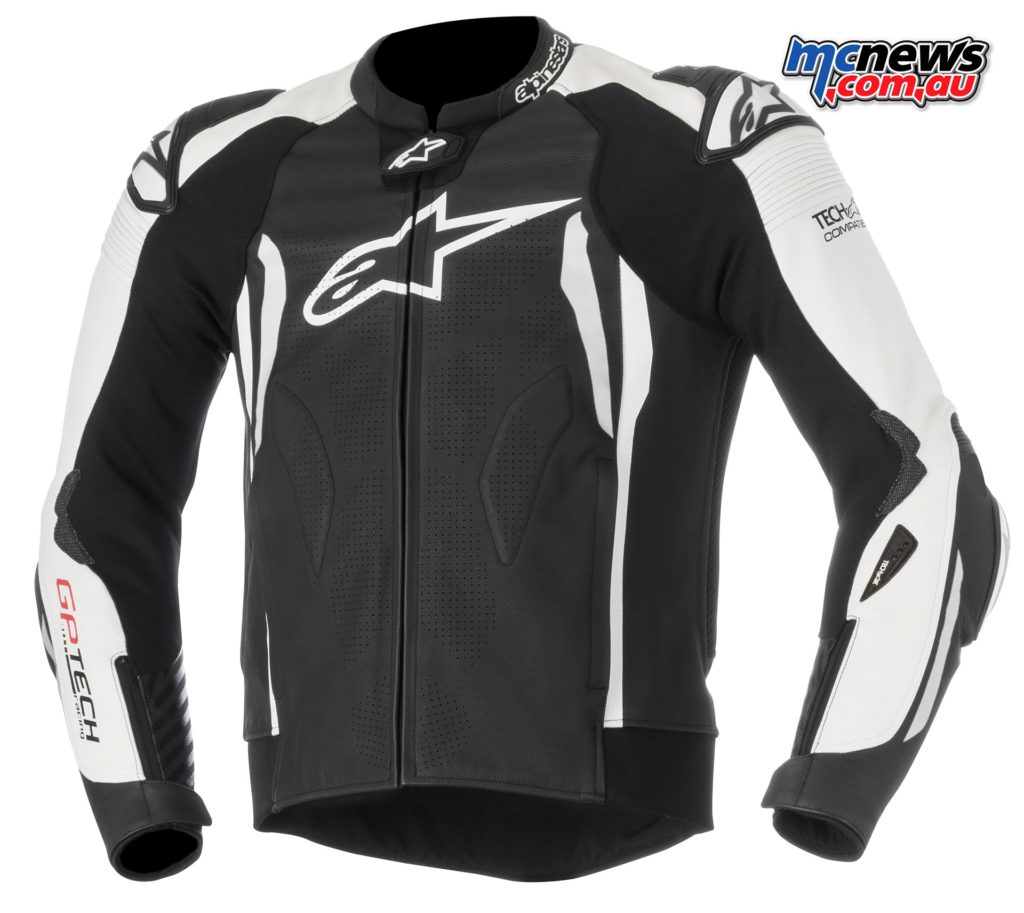
The GP Pro leather suit will sell for $1795.95 and be available in sizes ranging from 44-64.

The upper spec’ Tech V2 one-piece leather suit will retail for $2595.95 and will be sized from 44-58.
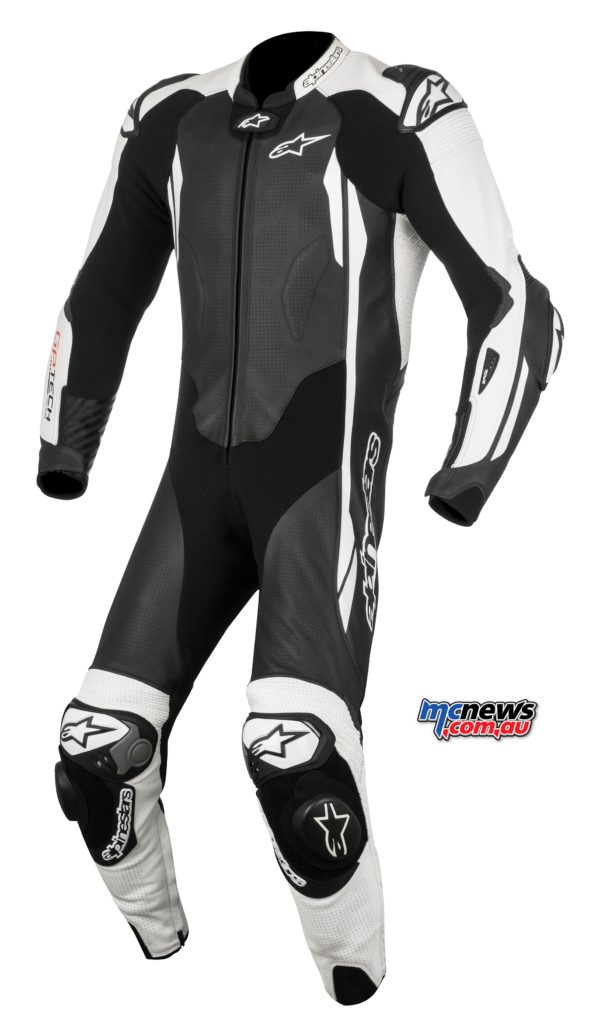
Should you use have an off that deployed the Tech-Air protections, and thus need to have your air-bag recharged that will cost you $500, via Alpinestars Australia. Not cheap, but a lot cheaper than replacing most automotive airbag systems in the event they are triggered. The service fee also includes the replacement of not only the charge canisters, but also the actual air-bag bladder itself.

On the upside, at least Alpinestars have utilised a generic Micro-USB charging system rather than some bespoke proprietary charger that you get bent over for if you need to replace a charge cable or want a spare. I’m glad they haven’t followed the lead of companies such as Apple or Shimano in this area. The jacket lasts for 25 active hours between charges, with time to full recharge taking approximately six hours. If on the road, a quick one-hour charge gives the suit sufficient power for another four hours in the saddle. The charge level and activation indicators are shown by LED lights on the compatible Alpinestars jackets.
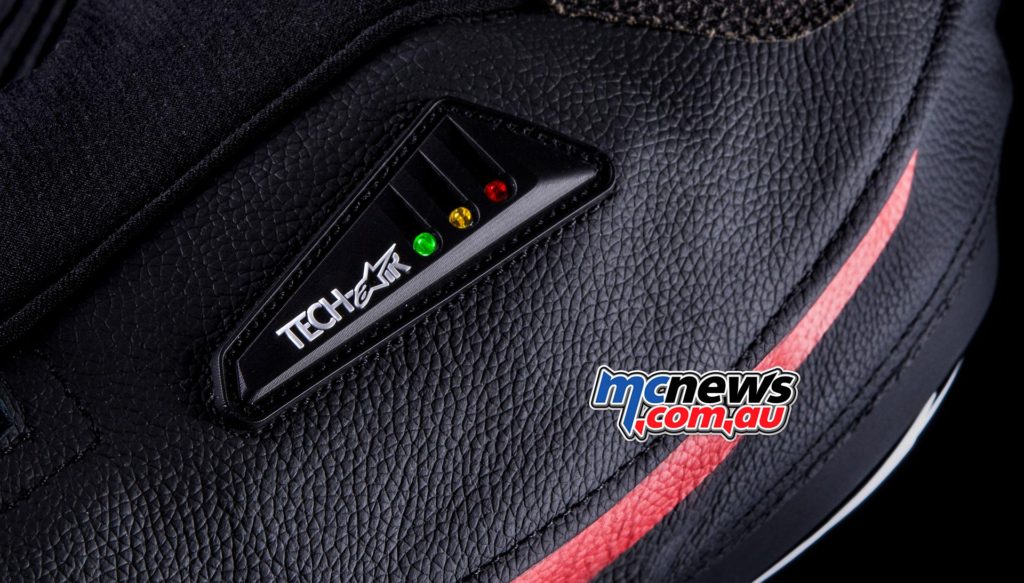
There are two versions of the Tech-Air, a road variant and a race type. For anyone that rides predominantly on the street, the road oriented Tech-Air is the wise choice.
While the airbag deployment algorithms differ between the road and race spec Tech-Air units, the street software can be downloaded to the race unit, depending on whether you are racing, or riding on the road.
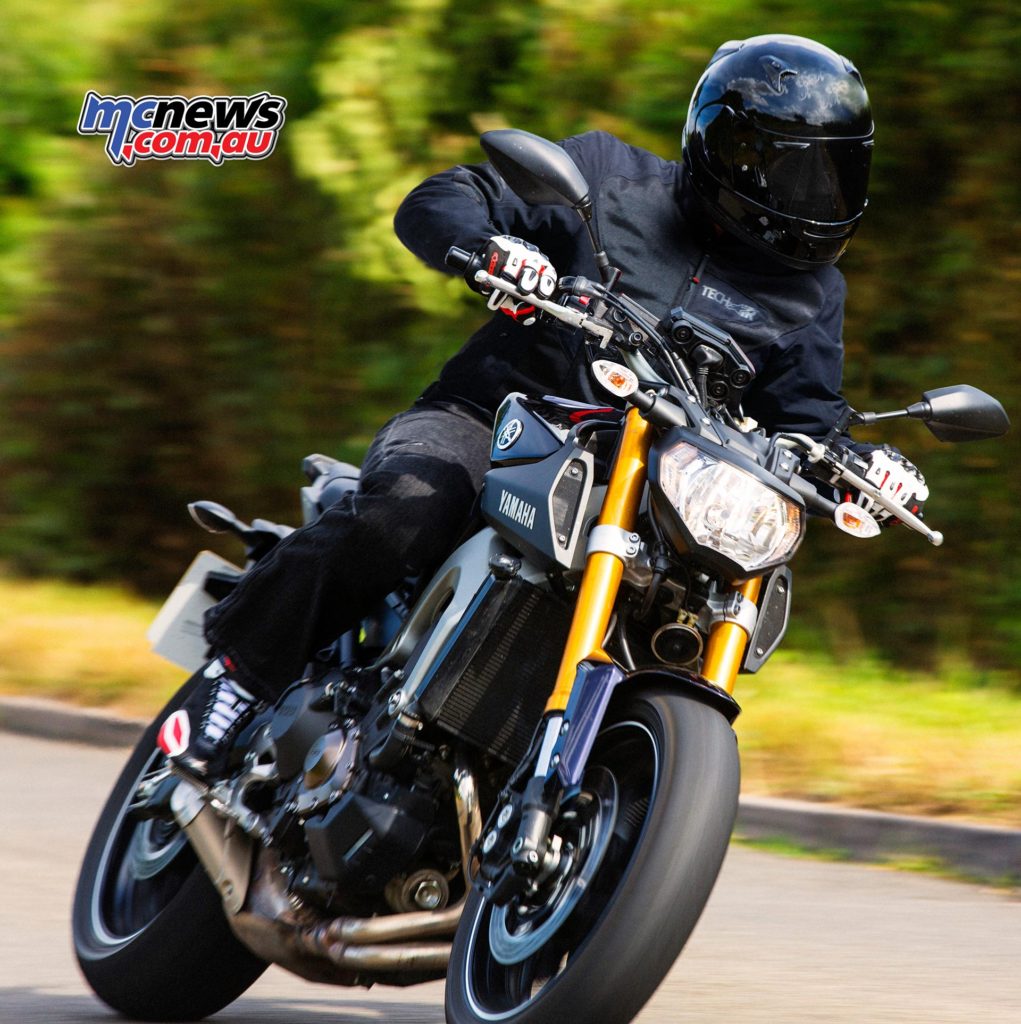
Obviously, racetrack crashes are generally very different to road based accidents, thus Tech-Air Street software is very specific, to cope with the unforeseeable nature of unexpected road collisions. As the Tech-Air Street Vest is designed for use with road riding jackets, the alternative race software can not be downloaded onto the Street system. However, the Race system version can be switched, via a firmware upgrade, to the Street mode, which then allows the user to use the technology within a leather suit, or jacket, on public roads.
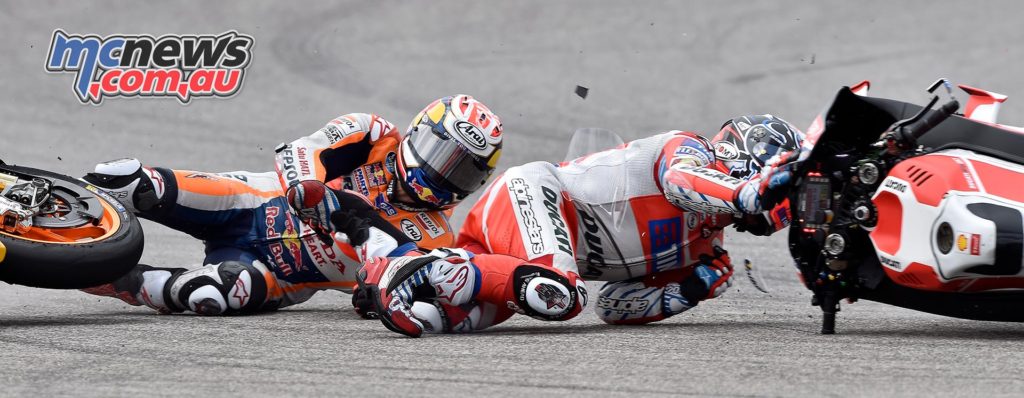
The other primary difference between the two is that while both variants have two charge canisters, the race system only deploys one charger to the vest, thus should the rider remount and continue the race, they have another protective charge remaining. While the road system deploys both charges simultaneously, further decreasing the reaction time, and providing yet more protection.
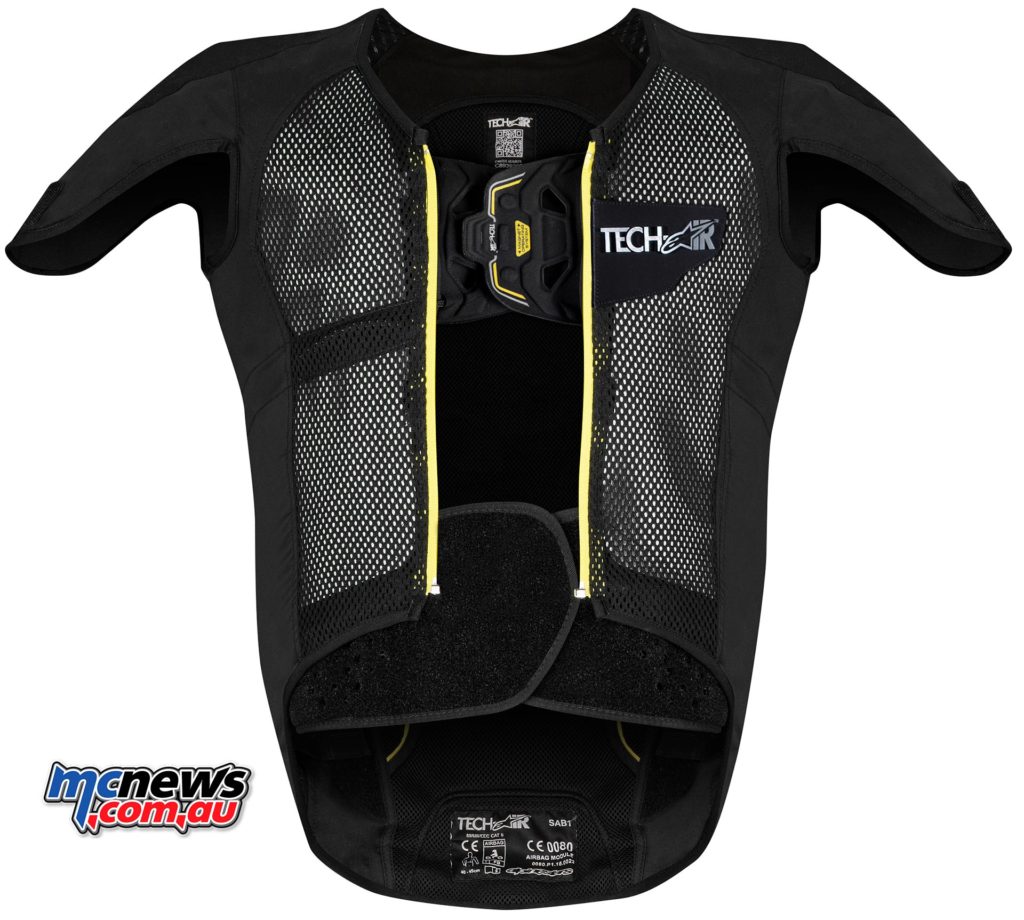
I am quite excited by this new development in rider protection, and I certainly want to get in one, as soon as possible.
The major drawback, of course, is cost of entry. Alpinestars can justify that cost due to the millions of dollars spent developing this system, and the thousands of man hours ensuring it is essentially fool-proof before bringing it to market. This includes many tests that ensured that an accidental air-bag deployment would not adversely affect the rider to the extent that it might inhibit their control of the motorcycle.
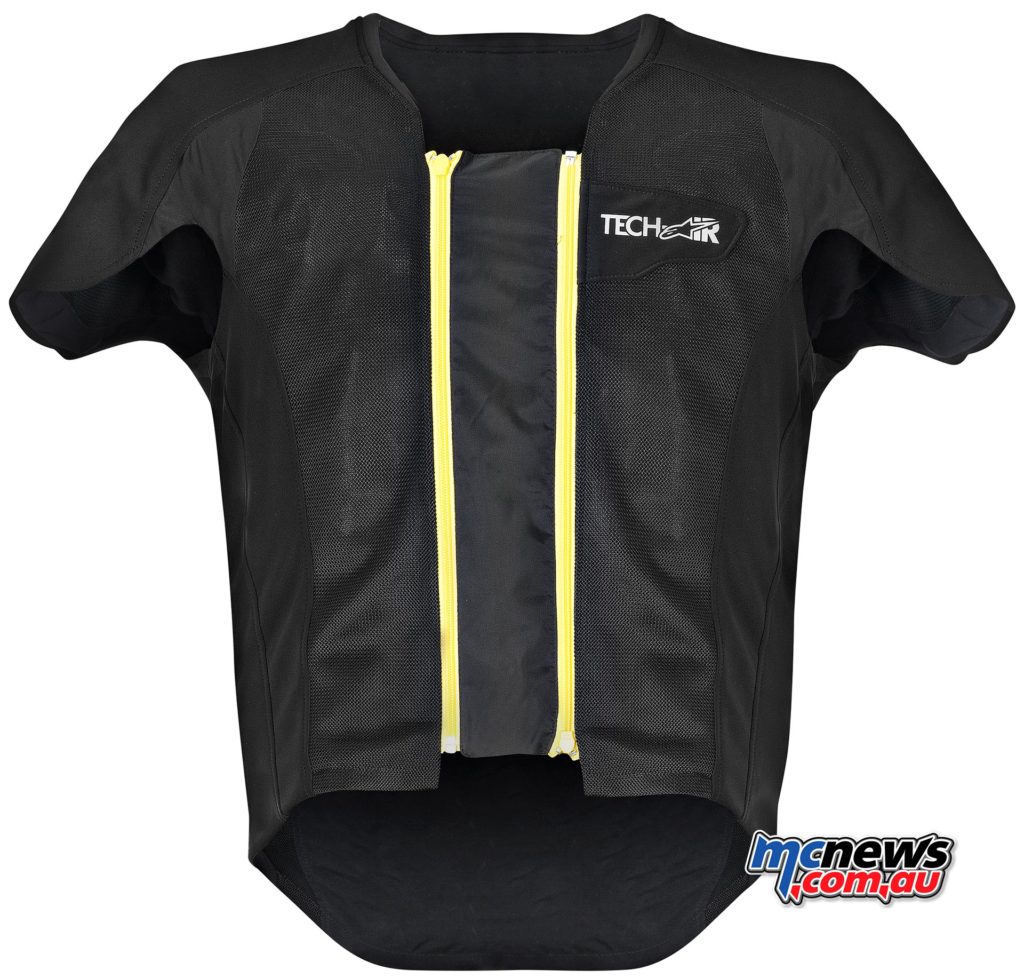
As Tech-Air, and other systems of this ilk become more mainstream, I can envisage a future where legislators mandate the use of such systems. As someone who likes to resist any rules enforced upon them I would find this quite distasteful, but perhaps it is eventually something we will have to come to accept. And, to be honest, that’s probably not such a bad thing after all.
Evolution of Alpinestars Tech-Air
- 2001; the creation of a functional, airbag system as a proof of concept.
- 2001 onwards; medical and accident statistical research into injury causes and computer simulation of active prevention covering crucial anatomy most susceptible to crash damage. Early crash scenarios tested.
- 2003; development of data logging capability.
- 2004 onwards; ongoing development of the airbag system based on test data, rider feedback and continuous refinement of electronics and sensing components.
- 2009 onwards; testing of the full, active, system with MotoGP and WSBK riders, as well as road riders to fine tune the activation parameters of the airbags for both the racetrack and road.
- 2011; market launch of a customer version of Tech-Air using the same technology in Alpinestars MotoGP program.
- 2013; MotoGP World Champion Marc Marquez crashes, without injury, in practice for the Italian Grand Prix at Mugello at over 200 mph. Tech-Air detects the loss of control after 0.025 seconds and is fully inflated 0.030 seconds before Marc’s first impact with the ground. Marc’s crash demonstrates the unique ability of Tech-Air to detect loss of control accurately and quickly, and that the system provided critical protection in commercial crash situations as well as highsides.
- 2013 – 2014: Current development of Tech-Air airbag system use begins in MotoGP and throughout pre-season tests in February and March 2014 with all Alpinestars MotoGP riders. Now providing extensive body protection, the airbag covers not only the upper body, but also the rider’s full back, chest, sides and hips.
- November 2014: The launch of Tech-Air Street, the world’s first and only truly dedicated, self-contained airbag system that independently functions without the need for sensors to be installed on the bike, offering comprehensive upper body protection with unrivalled freedom for riding a motorcycle both on and off road. From the outset Tech-Air Street’s development was expressly focused on the unique road and off-road riding situations. Alpinestars Tech-Air Street and Race technology is available from selected Alpinestars dealers across Europe: Italy, France, Germany, Spain and the UK.
- February 2016: Alpinestars launches the latest evolution in its 15-year Tech-Air technology program, Tech- Air Race, which is for racing and performance riding on track. The world’s first and only system to provide full upper body protection the Race system can be configured, via a system firmware switchover, to run the Tech- Air Street settings, for road and off-road riding.
- March 2017 – Alpinestars Tech-Air Street and Race products now available from selected Australian Alpinestars dealers























